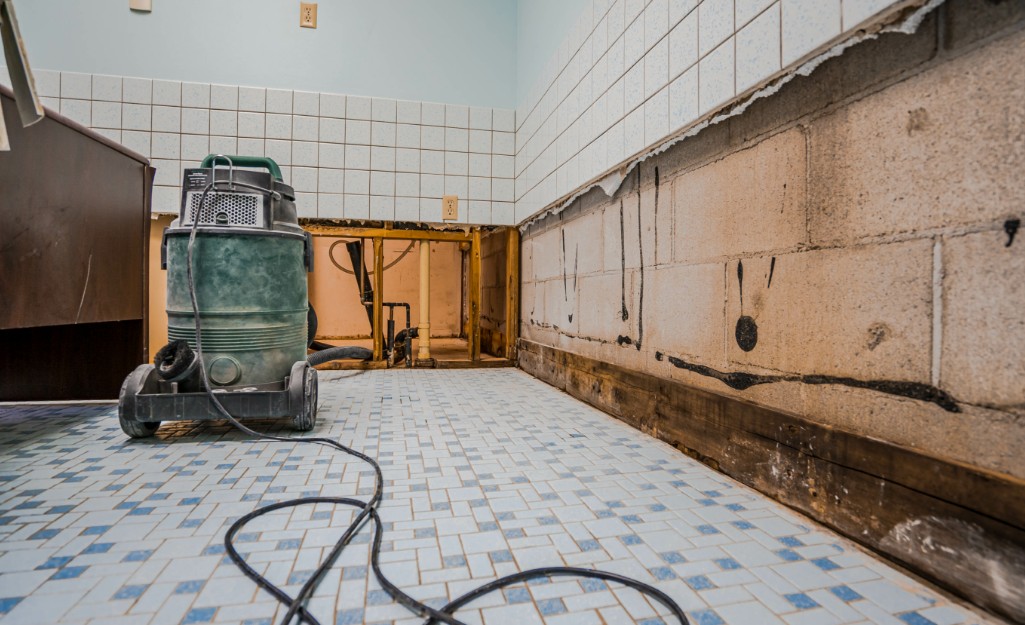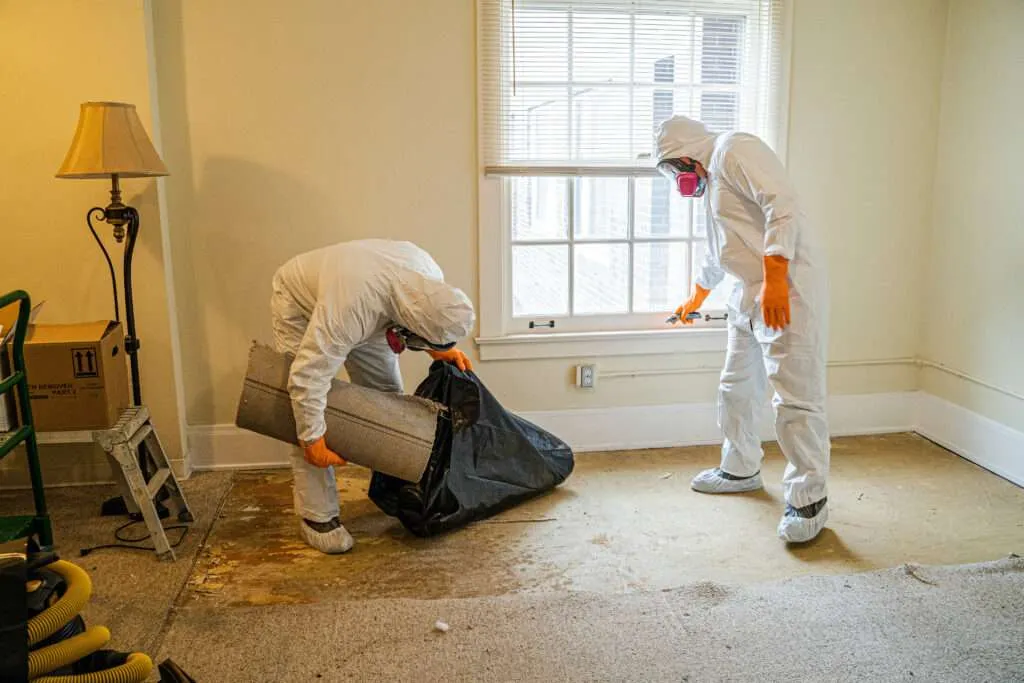Water Damage Restoration 101: Recognizing the Process and Cost
Water damage can strike unexpectedly, leaving property owners in a state of confusion. Recognizing the repair process is essential for efficient recovery. From reviewing the damage to choosing the right provider, each action impacts the total end result and cost. Elements such as the kind of water damage and necessity also play a substantial role. What are the particular techniques utilized in reconstruction, and just how can one get ready for potential costs?
Sorts Of Water Damage

First Assessment and Examination

Water Removal Techniques
Adhering to the first analysis, effective water removal methods are employed to minimize damage and avoid further problems. These strategies involve making use of specific devices such as submersible pumps and industrial-grade vacuums - Water Damage Restoration. The selection of method depends on the quantity of water existing and the sort of products affected. For standing water, submersible pumps are generally utilized for fast elimination, while vacuum cleaners are perfect for drawing out water from rugs and furniture. In addition, progressed approaches like water removal floor coverings may be utilized for hard-to-reach areas - Water Damage Restoration. The goal is to get rid of as much water as feasible, minimizing the possibility for mold and mildew development and architectural damage. Trigger and effective water removal is vital in the overall water damage remediation procedure
Drying Out and Dehumidification Process
As soon as the water removal is total, the drying and dehumidification process ends up being crucial to restoring the afflicted location. This phase commonly employs industrial-grade dehumidifiers and air movers to effectively decrease dampness degrees. The dehumidifiers draw in damp air, getting rid of excess moisture, while air movers flow air to speed up evaporation. Monitoring devices is commonly made use of to track humidity and temperature degrees, making certain ideal drying out conditions. The duration of this process can differ relying on the level of the water damage and environmental aspects. It is necessary to thoroughly dry all affected materials, including walls, flooring, and home furnishings, to avoid mold and mildew growth and architectural damage. Appropriate implementation of this step is critical for an effective repair result.
Cleaning and Disinfecting Damaged Areas
When the drying process is full, a complete first assessment and assessment of impacted locations is vital to recognize contamination levels. Effective cleansing techniques and appropriate products have to after that be employed to eliminate debris and discolorations. Sanitization and sanitation approaches are essential to ensure that harmful virus are gotten rid of, restoring the room to a secure problem.
First Analysis and Inspection
Before beginning any type of reconstruction initiatives, a detailed first assessment and examination of the impacted locations are important for effective cleansing and sanitizing. This process involves recognizing the extent of water damage, determining the source of the water breach, and reviewing the materials impacted. Examiners typically look for signs of mold and mildew growth, structural honesty issues, and harmed personal belongings. The assessment likewise consists of inspecting wetness levels utilizing specific tools to guarantee no covert water pockets remain, as these can lead to additional difficulties. Recording the findings is important for intending the following action in the repair process. An in-depth preliminary evaluation makes it possible for repair professionals to devise a targeted strategy for reliable cleansing and disinfecting, inevitably reducing damage and health threats.
Cleansing Methods and Products
Efficient cleaning and sterilizing of water-damaged locations require a range of items and strategies customized to the details materials influenced. For porous surface areas like drywall and carpets, removal techniques are vital to get rid of excess dampness, adhered to by deep cleansing with specialized detergents. Non-porous materials such as ceramic tile or metal can be cleaned up utilizing commercial-grade cleansers that successfully get rid of pollutants. Heavy steam cleansing is an additional effective method, especially for rugs and furniture, as it makes use of heats to get rid of microorganisms and mold and mildew (Flood Cleanup Services). Additionally, environment-friendly products are significantly preferred for their safety and effectiveness - Mold Remediation After Water Damage. Eventually, choosing the appropriate cleansing methods and items not only ensures instant cleanliness yet additionally help in protecting against further damage and health threats connected with water intrusion
Sanitization and Disinfection Techniques
When attending to water damage, proper sanitization and disinfection techniques are necessary to guarantee the safety and wellness of the damaged setting. After first cleaning, surfaces have to be treated with suitable disinfectants to get rid of microorganisms, mold, and microorganisms that thrive in damp conditions. Typical methods consist of making use of EPA-approved chemical anti-bacterials, which can be applied with spraying or cleaning strategies. In addition, ultraviolet (UV) light systems can properly disinfect areas by neutralizing microbes without harsh chemicals. The option of approach frequently depends upon the kind of materials affected and the extent of contamination. Ultimately, thorough sanitization not only restores a risk-free living space but additionally check here assists protect against future health and wellness threats connected with lingering dampness and mold and mildew growth.

Repair Work and Restoration Options
Assessing the damage created by water exposure is important for establishing the proper repair services and restoration choices. Property owners may encounter numerous issues, consisting of harmed drywall, deformed flooring, and endangered structural components. Relying on the degree of the damage, repairs might include replacing areas of drywall, mounting new floor covering, or strengthening structural beams. In instances of extreme damage, total replacement of affected materials could be required. Additionally, professional conservators typically suggest utilizing moisture meters to examine concealed dampness degrees prior to selecting the best strategy. It is essential to act immediately to stop mold development and additional deterioration. Choosing the appropriate options not only restores the residential or commercial property however likewise guarantees long-term safety and performance.
Factors Influencing Restoration Expenses

The extent of water damage directly impacts the restoration sets you back property owners can expect to sustain. Factors such as the source of the water, the duration of exposure, and the afflicted materials substantially affect prices. Tidy water damage from a damaged pipe is normally less expensive to restore compared to damage triggered by sewage. Additionally, the level of contamination dictates the need for specialized cleansing and disposal solutions, further enhancing costs. Geographic location also plays a function, as regional labor rates and accessibility of restoration services can vary. Finally, the seriousness of the reaction influences expenses; quicker treatments typically lead to lower overall expenses by preventing further damage. Understanding these factors is essential for property owners when estimating restoration prices.
The 3 main kinds of water damage are classified based on contamination levels: clean water, gray water, and black water. A thorough first assessment and evaluation are vital actions in the water damage repair process. For standing water, submersible pumps are commonly made use of for fast removal, while vacuum cleaners are excellent for drawing out water from carpets and furniture. The extent of water damage straight influences the repair sets you back home owners can expect to sustain. Clean water damage from a broken pipe is typically much less expensive to bring back contrasted to damage triggered by sewage.